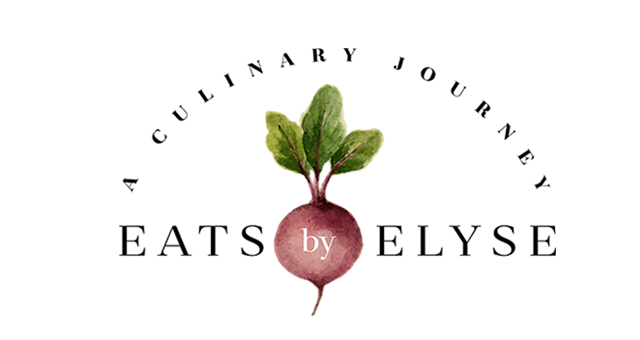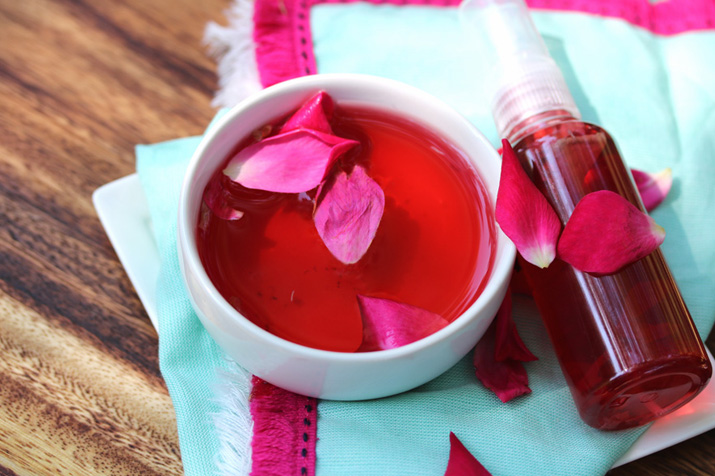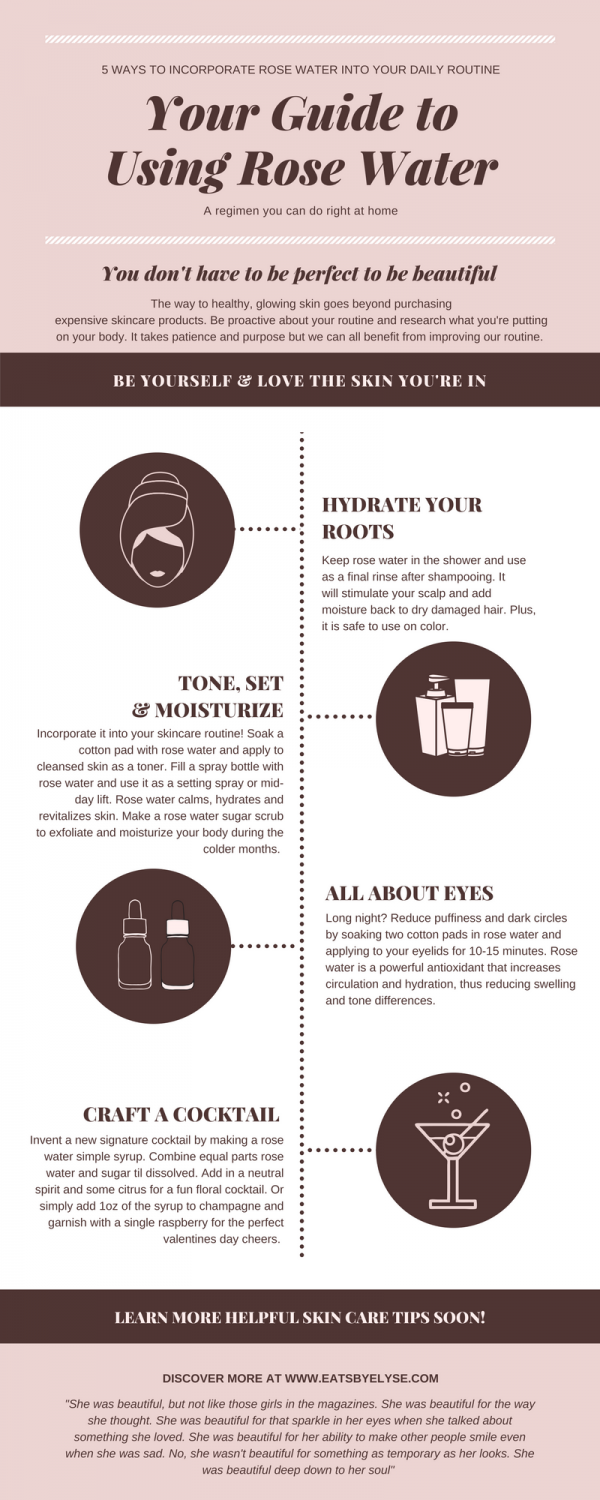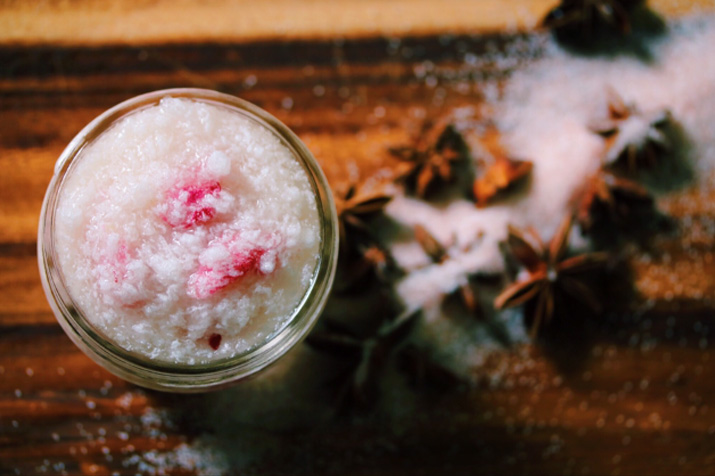Rose Water is a great addition to any skin care routine.
Most of us would describe ourselves as conscientious buyers. We care about where our food comes from, we care about the ingredients used and more often than not we move through a grocery store reading every label. So why is it different when it comes to skin-care and cosmetics? Both are regulated by the same FDA and yet no law has been passed to regulate the ingredients in personal care products since 1938. This really shocked me and got me thinking. I started to look at all the products I was using—the chemicals, their impact, and level of toxicity. The information was overwhelming and although I didn’t chuck all of my products into the trash, I did decide on that day to make some notable changes.
Business and industry is always motivated by trends—the beauty industry is no different. When something becomes “trendy” they latch onto it and develop a new line of products. Undoubtedly, one of the biggest trends this year was rose water. Everywhere you turned, every new toner, mask, and cleanser bared the name rose water within the title. Yet, if you turn the product around you would see a list of at least 10 other ingredients with the star player being one of the last.
I couldn’t imagine that people were really getting the benefits of rose water with such minimal exposure. So, I set out to research making my own and I am in love with the results!
Rose Water
Ingredients
- 1/4 cup dried rose petals
- 1 cup boiling water
Instructions
- Add 1/4 cup dried rose petals to the bottom of a French press. Pour 1 cup boiling water over the petals and steep for at least 30 minutes. Push the plunger of the French press to separate the rose petals from the water and strain off the liquid. Allow it to cool and you have rose water.
- Alternate Method: If using rose petals, submerge petals in water and bring to a boil on your stovetop. Once boiling turn the heat off, cover, and steep for at least 30 minutes or until the petals turn white.
Notes
Rose water originally derived from the production of rose oil, once used to make perfume. A process known as steam-distillation would capture the oil from rose petals and leave behind rose water as a by-product. As people began using rose water they noted many natural health benefits that still reign true today. Rose water stimulates circulation underneath the skin and balances pH levels naturally. Often used to tone the skin, rose water has calming properties that help reduce inflammation, redness, puffiness and skin discoloration. It is an antioxidant with natural antibacterial properties which helps cleanse acne prone skin without stripping or over drying. I put mine in a spray bottle and use it periodically throughout the day to rehydrate my skin—it feels great and gives me a dewy look over my make-up. Today, rose water is even used by many as a setting spray to increase the life and wear of your make-up. The uses for this product are endless and I was shocked at how easy it was to make at home. I’ve included this link to my Rose Sugar Scrub as well as this downloadable fast fact sheet of other great uses.
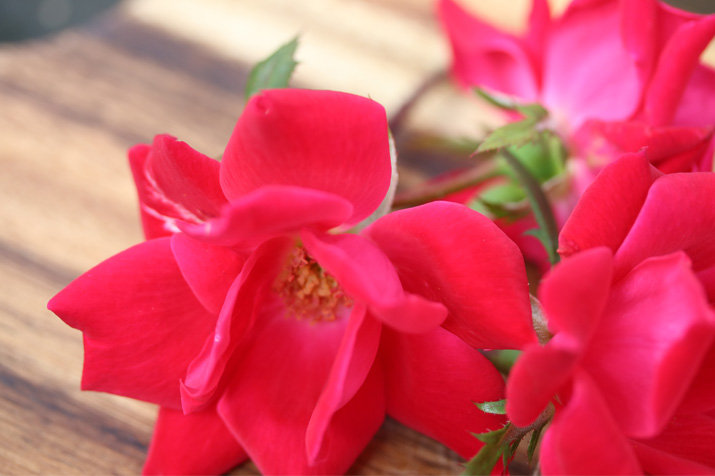 Rose water is a great addition to any skin care routine and has so many natural healing properties that make it ideal for sensitive skin. It is super easy to make at home and can even be packaged as gifts for friends. I hope you find it to be as beneficial to your life as it has recently been to mine. Enjoy!
Rose water is a great addition to any skin care routine and has so many natural healing properties that make it ideal for sensitive skin. It is super easy to make at home and can even be packaged as gifts for friends. I hope you find it to be as beneficial to your life as it has recently been to mine. Enjoy!
